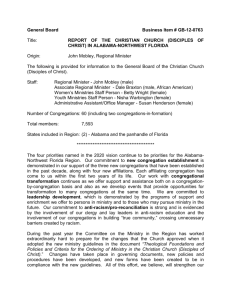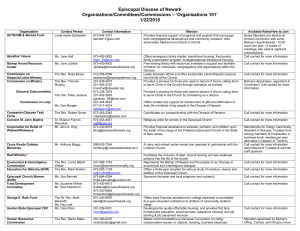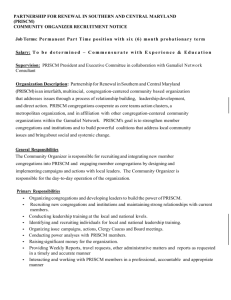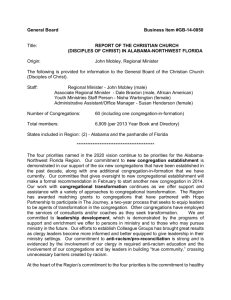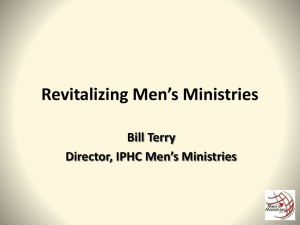Bishop`s Pastoral Letter - Good Samaritan Episcopal Church
advertisement
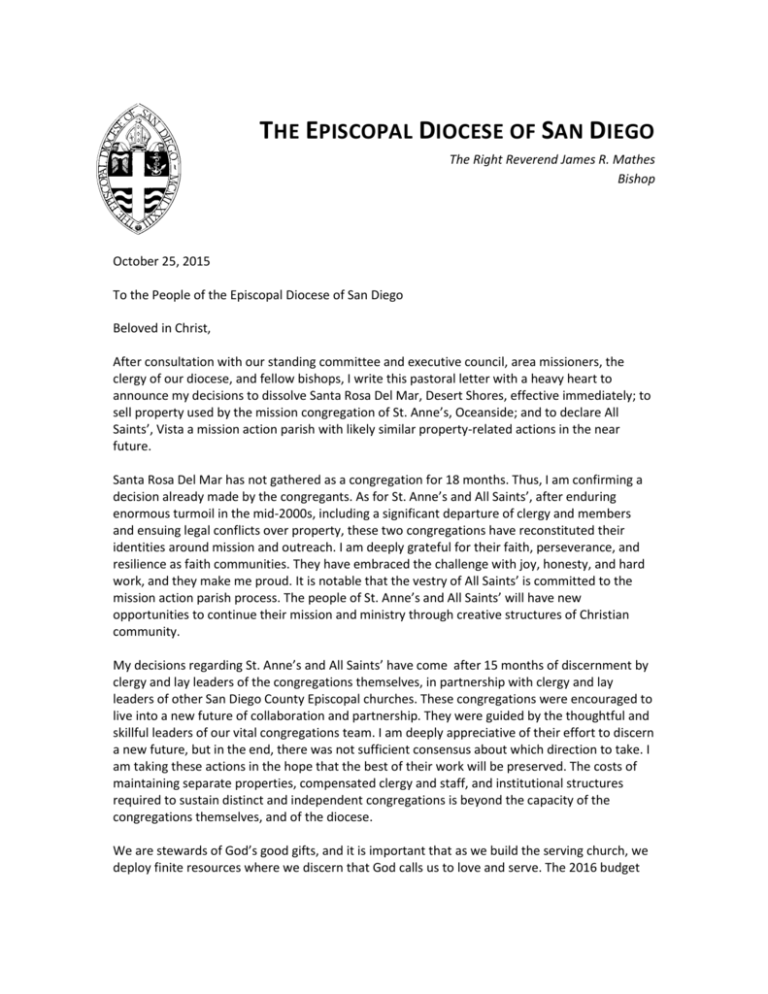
THE EPISCOPAL DIOCESE OF SAN DIEGO The Right Reverend James R. Mathes Bishop October 25, 2015 To the People of the Episcopal Diocese of San Diego Beloved in Christ, After consultation with our standing committee and executive council, area missioners, the clergy of our diocese, and fellow bishops, I write this pastoral letter with a heavy heart to announce my decisions to dissolve Santa Rosa Del Mar, Desert Shores, effective immediately; to sell property used by the mission congregation of St. Anne’s, Oceanside; and to declare All Saints’, Vista a mission action parish with likely similar property-related actions in the near future. Santa Rosa Del Mar has not gathered as a congregation for 18 months. Thus, I am confirming a decision already made by the congregants. As for St. Anne’s and All Saints’, after enduring enormous turmoil in the mid-2000s, including a significant departure of clergy and members and ensuing legal conflicts over property, these two congregations have reconstituted their identities around mission and outreach. I am deeply grateful for their faith, perseverance, and resilience as faith communities. They have embraced the challenge with joy, honesty, and hard work, and they make me proud. It is notable that the vestry of All Saints’ is committed to the mission action parish process. The people of St. Anne’s and All Saints’ will have new opportunities to continue their mission and ministry through creative structures of Christian community. My decisions regarding St. Anne’s and All Saints’ have come after 15 months of discernment by clergy and lay leaders of the congregations themselves, in partnership with clergy and lay leaders of other San Diego County Episcopal churches. These congregations were encouraged to live into a new future of collaboration and partnership. They were guided by the thoughtful and skillful leaders of our vital congregations team. I am deeply appreciative of their effort to discern a new future, but in the end, there was not sufficient consensus about which direction to take. I am taking these actions in the hope that the best of their work will be preserved. The costs of maintaining separate properties, compensated clergy and staff, and institutional structures required to sustain distinct and independent congregations is beyond the capacity of the congregations themselves, and of the diocese. We are stewards of God’s good gifts, and it is important that as we build the serving church, we deploy finite resources where we discern that God calls us to love and serve. The 2016 budget that executive council will present to diocesan convention on November 7 reflects these changes. You will also see a corresponding shift toward providing human and financial resources for youth and young adult ministries, Latino ministries, and immigrant and refugee ministries. These mission priorities have been identified through convention resolutions and by feedback from congregational leaders throughout the diocese. Funds recovered through the sale of property will be re-directed toward expanding ministries where we believe God is calling us to stretch and grow, and to ensure that we offer ongoing pastoral ministry to those most directly affected by these decisions. As this process unfolds, we will draw significantly on financial reserves to care for the communities of St. Anne’s and All Saints’, and to help them, and other congregations, to grow in new ways. Congregational decline is not unique to St. Anne’s, All Saints’, and Santa Rosa Del Mar. As the 2014 Pew Research “Religious Landscape Study” reported in May 2015,i the challenges we face in our diocese are widespread throughout the U.S. Many Americans have genuine spiritual hunger, but fewer and fewer receive nourishment through traditional religious communities predicated on one building, one or more clergy, and one congregation. We still have a vital and important ministry to fearlessly love our communities and our world. Understanding that more partnerships will enhance the present and future ministry of the Episcopal Diocese of San Diego, I anticipate additional actions and unifications in the coming months. In several cases, I imagine that small, struggling congregations will forge partnerships with neighbors in ministry such as the recent collaboration between St. Paul’s Cathedral and St. Luke’s, San Diego. Some of these partnerships may lead to actual mergers of congregations. In the first century, John the Evangelist wrote to a struggling nascent community, “Beloved, we are God’s children now; what we will be has not yet been revealed,” (1 John 3:2a). We experience these changes as wounding and loss, and that loss is real. But it is not final. The prophet Joel points to a time when “old men shall dream dreams, and your young men shall see visions.” Together, we have dreams and visions for the Episcopal Church in our diocese, and on behalf of the people we love and serve. In the short term, I foresee significant collaboration and less competition in our ministries. I imagine more clergy teams and fewer solo clergy. I see glimpses already of shared ministry initiatives touching more and more communities. The Diocesan Service Coalition already has created a host of collaborative and fruitful servant ministries that have expanded our corporate servant soul. The Youth Collaborative is gaining traction and building on strengths established last year. Latino leadership expands throughout our churches as diocesan young adults explore life together. But I have an even bigger, more expansive dream than this. I dream of an assembly of strong congregations of various sizes. I see us expanding our presence by developing communities that hunger and thirst for justice and knowledge of God. I see us growing stronger as we adapt to changing conditions. This will not necessarily translate into building new buildings. It may mean that we use our current buildings more, but differently – in greater collaboration with the community and our ecumenical partners. The mission of the church is not to support or maintain every building; buildings must support the serving church. In this new vision, clergy will serve and act differently. They will be more mobile and empowering of ministry—less doers and more teachers and coaches. Each of our congregations will be surrounded by small communities. Reminiscent of house churches of the first century, they may be drawn together by shared ages and locations, or by a rule of life, or by a missional focus. We will have fewer institutions, but more communities, more people gathered around altars, more people involved in ministry, and more souls touched by Jesus. All of this represents deep investment in Christian community and formation as disciples. As your bishop, I am called by God to do the hard work of leading through change. It is a call to the Church to change and to make the decisions that move us forward. I will do this work. But I need your help. This will be risky. This is nothing less than actually believing the core of our faith that we must die to live. We are an Easter people who trust in the surprising joy of resurrection and new life. As we move forward, I will keep you informed of developments, ask for your feedback, seek your participation, and cherish your prayers. We will strive to do God’s work. We will stumble. We will learn and grow. And I believe, in the process, we will find ourselves transformed. May God’s grace and peace be with you, The Rt. Rev. James R. Mathes Bishop Enclosures: i Further Resources for Group Discussion Talking Points for Connecting with Abiding Spiritual Truths Frequently Asked Questions http://www.pewforum.org/2015/05/12/americas-changing-religious-landscape/


